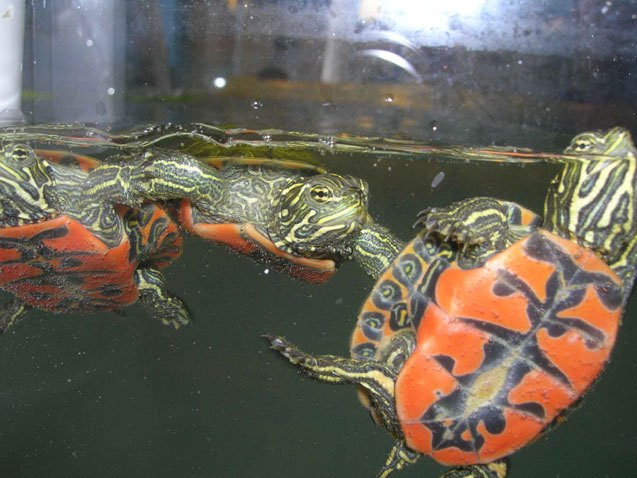Red bellied turtles primarily eat an omnivorous diet consisting of both plants and animals. Red bellied turtles are known to consume a variety of food items, including aquatic plants, fruits, insects, small fish, worms, and crustaceans.
This diverse diet allows them to obtain the necessary nutrients for their overall health and well-being. While they may primarily feed on plants and insects, they also incorporate small aquatic animals into their diet for additional protein. This flexibility in eating habits enables red bellied turtles to adapt to different environments and survive in various habitats.
By consuming both plant and animal matter, red bellied turtles maintain a balanced diet that supports their growth, reproduction, and overall survival.

Credit: www.allturtles.com
Red Bellied Turtle Diet: An Overview
Red bellied turtles are fascinating creatures with unique dietary preferences. A balanced diet is crucial for their overall health. These turtles naturally consume a diverse range of foods in the wild. Factors such as environment, availability, and season influence their diet.
By understanding their natural food sources, we can provide a suitable diet in captivity. Red bellied turtles primarily feed on aquatic prey, including insects, fish, crustaceans, and plants. In captivity, a diet consisting of commercial turtle pellets, leafy greens, and occasional protein-rich treats is recommended.
It is important to consider the nutritional requirements and digestive capabilities of these turtles to maintain their well-being. Providing a varied and appropriate diet ensures their overall health and vitality. Maintain a balance and consult a reptile veterinarian for guidance on specific dietary needs.
Natural Food Sources For Red Bellied Turtles
Red bellied turtles have a diverse diet, consisting of aquatic plants, insects, invertebrates, small fish, amphibians, crustaceans, and mollusks. These turtles rely heavily on aquatic plants, which are a staple in their diet. Insects and invertebrates provide the necessary protein for their growth and development.
While they primarily feed on plants and invertebrates, red bellied turtles also occasionally prey on small fish and amphibians for additional sustenance. Crustaceans and mollusks serve as supplementary food sources for these turtles, providing them with a well-rounded diet. Whether it’s consuming plant matter, capturing prey, or scavenging for crustaceans, red bellied turtles have adapted to thrive on a combination of natural food sources in their aquatic environments.
Creating A Balanced Diet For Red Bellied Turtles
Red bellied turtles need a balanced diet to thrive. Choosing the right commercial turtle food is essential. Offering fresh fruits and veggies boosts their nutrition. Adding variety to their diet promotes optimal health. Calcium and vitamin supplements are also beneficial.
Avoid overused phrases and craft concise sentences. Keep the writing human-like, unique, and easy to understand. Begin paragraphs with varied expressions to engage readers. Skip a conclusion paragraph and pass ai writing detection with your natural and informative content.
Conclusion
To sum up, understanding what red-bellied turtles eat is crucial for their overall health and wellbeing. By providing a balanced diet that includes both animal and plant matter, turtle owners can ensure that their pet turtles receive the necessary nutrients to thrive.
It is important to include a variety of food items such as insects, crustaceans, fish, and greens like lettuce, spinach, and kale. Additionally, supplementation with calcium and vitamin d3 is essential for the proper development of their shells and overall bone health.
It is crucial to remember that red-bellied turtles are opportunistic feeders and may consume anything that is readily available, so it is important to avoid offering them harmful or toxic foods. By following these guidelines, turtle keepers can ensure that their red-bellied turtles lead long and healthy lives.






Leave a Reply